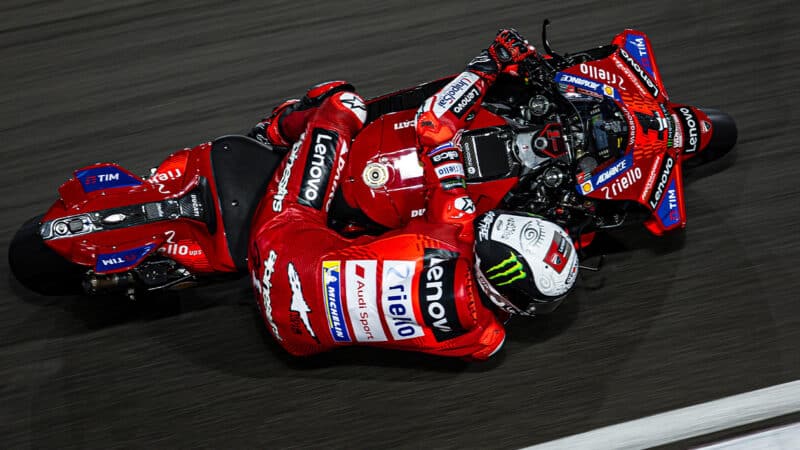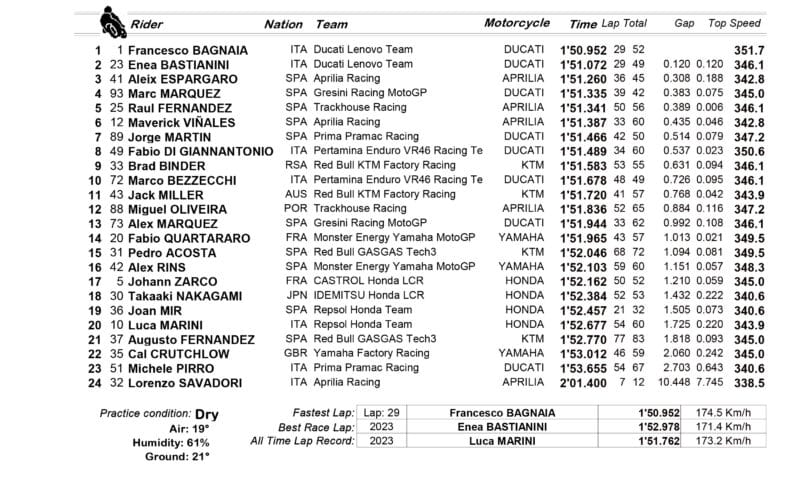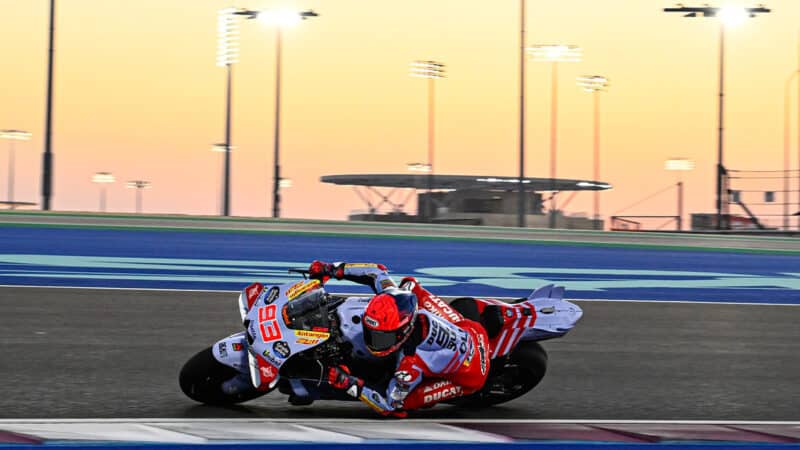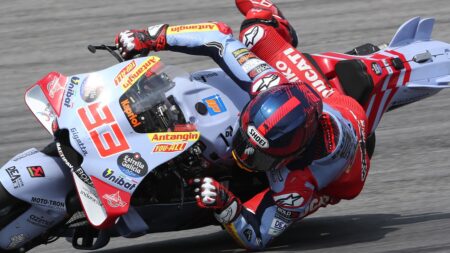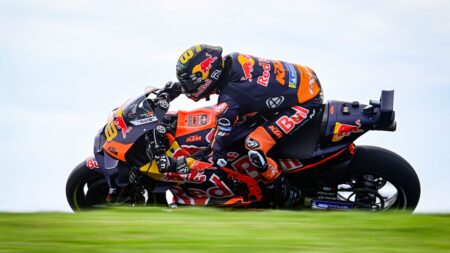Will the six-time MotoGP king be there when the racing starts? He’ll be up front somewhere but he’s still adapting his riding style from the Honda. Aboard the RC213V he made his time charging into corners, whereas the Ducati is all about the exit, allowing the bike to transfer its massive torque to the racetrack, which is its strongest feature.
KTM is trying so hard to catch the Italians but still coming up short, despite luring so many engineers from Ducati. The Austrian brand is MotoGP’s only manufacturer (including Suzuki, which quit at the end of 2022) not to have won a dry GP in the last two and a half years. Its last dry GP victory came at Barcelona in June 2021, with Miguel Oliveira. That’s quite a drought.
Brad Binder was the fastest RC16 rider at Sepang and Lusail, where he was ninth, six-tenths off the pace. He rode the longest race simulation – but pretty much every lap was in the 53s, while most of Bagnaia’s shorter simulation were high 51s to mid 52s. A big difference.
KTM thus has a lot of work to do to get ready for the first races. But it was in the same situation after last year’s final pre-season tests at Portimao but managed to turn things around for the start of the season. They will be burning the midnight oil once again in Mattighofen.
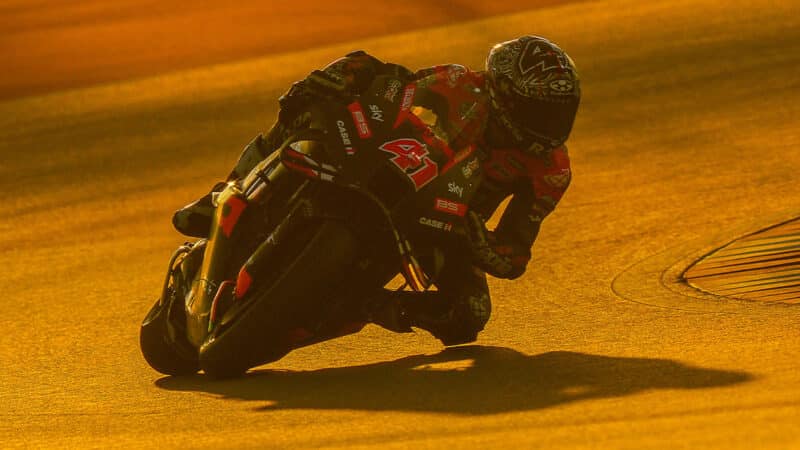
Espargaró rides into the sunset – he was the only ride in the same league as Bagnaia and Bastianini in race simulations
Dorna
Rookie Pedro Acosta dazzled occasionally during testing. He was ninth at Sepang and 15th at Lusail. But none of the top riders who followed him on track have any doubt – he doesn’t look like a rookie.
The two days at Lusail were grim for Honda and Yamaha – nothing seems to have changed for the Japanese manufacturers since last year.
The fastest rider on a Japanese bike was 2021 champ Fabio Quartararo, way down in 14th, more than a second behind Bagnaia. Then his new team-mate Alex-Rins in 16th, then all four Honda riders in a row, from 17th to 20th – Johann Zarco, Takaaki Nakagami, Joan Mir and Luca Marini.
Mir had liked the new Honda during last November’s tests at Valencia, but Sepang and Lusail are different kinds of racetrack.
Never forget the usual MotoGP caveat. We never know what will happen in MotoGP
The Repsol pair were both ill on the final day, but there’s no doubt that both factories still have a long road ahead of them before they can even think about reclaiming their former glories. They have their new concessions, of course, but even these don’t guarantee success.
The main problem for both is corner-exit traction, which means electronics, because the Honda has good power and the Yamaha had good top speed at Lusail. Indeed Quartararo had the best average top speed at Lusail, with Rins fourth, so Luca Marmorini’s engine is doing the job.
Both Japanese factories have struggled ever since MotoGP’s Magneti-Marelli spec ECU arrived in 2016 (Márquez made the difference with his riding), as one HRC engineer told me, “Now we have to think like Italians”.
Both Honda and Yamaha now have Italian electronics wizards, but they still can’t unlock the full potential of the Magneti electronics.
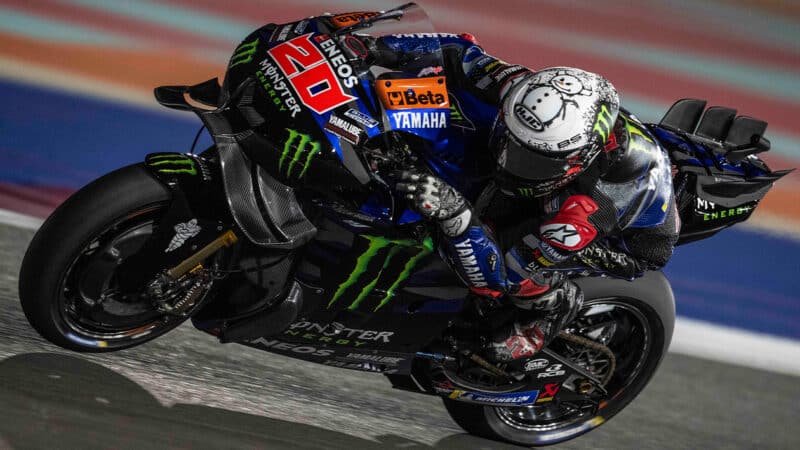
Quartararo’s Yamaha had the best top speed at Lusail but his time attacks and race pace were far from good enough
Yamaha
Ducati leads in this area, and not in only in how we generally think of race electronics. The company also leads the way in artificial intelligence and machine learning, two types of computer technology that allow computers to think better than humans, depending on the data fed into the computer, of course.
These technologies require vast amounts of data, and vast amounts of data is what only Ducati has, with twice as many bikes on the grid as anyone else.

